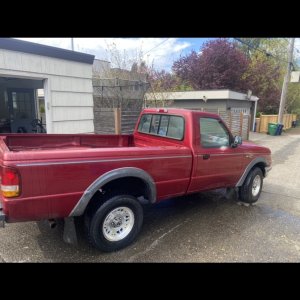I was sitting here pondering the idea of where to put the MAF. I thought I read that it should be a foot or so in front of the turbo.
Dave, do you have any insight where I can apply some logic here? I'd imagine that a remote turbo with the MAF in it's stock location would have some crappy throttle response as the metered air wont match what's getting past the TB. Or would it just not matter?
I'm most likely putting my MAF between the 2x 90 deg. bends between the TB and where it will start the down path to the turbo. The closer to the TB the better; that will give the closest reading to what is truly going into the motor. Mounting it right down by the turbo means the blow-off valve has to be between it and the throttle body, and THAT would be bad news since you are measuring air that could potentially be blown back out. That would give you serious potential for a major throttle stumble.
Also, being that close to the turbo would be more dangerous for throttle response since, under certain conditions (like blipping the throttle, or punching it and instantly backing back out), you could potentially have like a 'wave' of air blow through the MAF during sudden spool-up, making it seem like a large amount of air is going through, when in reality it's only for that instant, and not really any air at all has gone in. By the time the 'wave' dissipates among the rest of the charge tubing, the damage is done. To me, that's what would make it lag or stumble like a son of a.
As for the intercooler effect of the tubing, the charge tubing typically runs so close to the exhaust on the STS setups it isn't going to matter anyway. If I get some wildly high IAT's I'll add an intercooler at an angle and scoop into it. My truck sits high enough off the ground it won't be any problem. I have plenty of room to work with.
Although the filter will be under the hood, only about 3' of intake tubing will be under the hood. I'm moving the washer/coolant bottles, and the tubing will turn down and run through the fenderwell and down along the frame under the cab. After it hits the turbo, it will follow essentially the exact same track back up, then with a little bit of extra tubing to route it into the throttle body.
In reality, any heat that gets taken on under the hood on intake should get evened out by the tubing next to the frame. The frame in itself will act like a huge-ass heatsink. Since I won't have charge tubing following the exhaust all the way from the back to the front, and since every remote setup has to run the charge pipe under the hood to get to the TB anyway, I have no worries whatsoever. IAT's should be barely higher than what they are as stock.















